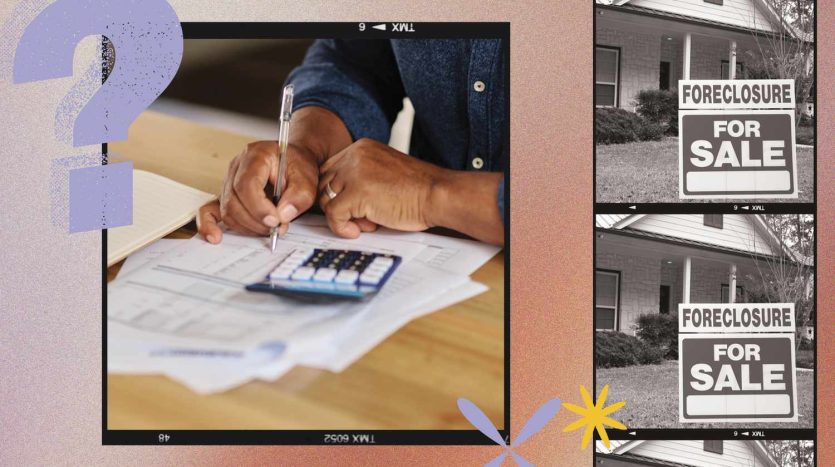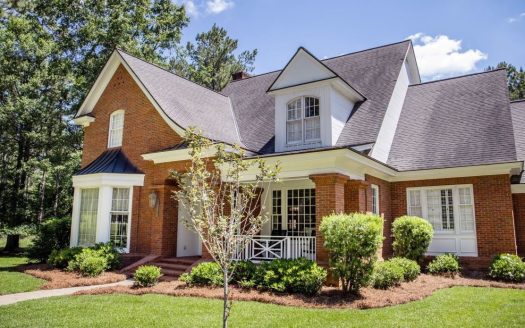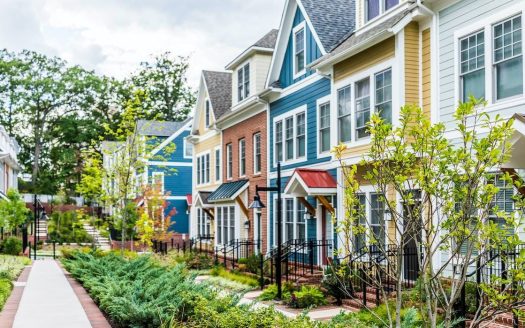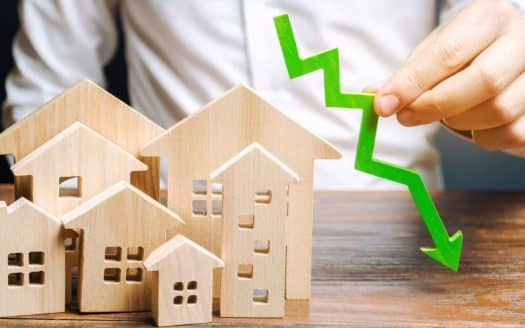Foreclosure rates in the US
[ad_1]
Key Takeaways
- Completed foreclosure filings increased 115% in 2022 from a year earlier, but were down 34% from 2019.
- One of the biggest contributors to the increase in foreclosures was the end of the foreclosure moratorium during the pandemic.
- The vast majority of foreclosed people have positive equity and can use this to refinance or sell their property – a trend that will continue in 2023.
- States with the highest foreclosure rates include Illinois, New Jersey and Delaware.
- States with the lowest foreclosure rates include South Dakota, Vermont and North Dakota.
When the mortgage borrower is no longer able to repay the loan, the final result . This is a difficult situation for any home owner, as they end up losing their home and potentially their mortgage payments.
On a larger scale, the foreclosure rate for states and the country as a whole can provide insight into the overall economic picture. For example, an increase in foreclosures could indicate problems with the labor market or an impending recession.
Foreclosure rate trends
Foreclosure rates more than doubled in 2022 compared to a year ago, according to real estate data company ATTOM. The number of filings, which include default notices, scheduled auctions and bank foreclosures, reached 324,237. This is 115% more than the number of foreclosure applications in 2021.
The jump came after the expiration of a federal foreclosure moratorium that went into effect in March 2020 as part of the CARES Act. It barred lenders from starting foreclosure proceedings on some government-backed mortgages. It also allowed homeowners experiencing financial hardship due to the pandemic to request a plan for up to 18 months. Those provisions expired on July 31, 2021.
Important
Number of Foreclosure Applications Completed in 2022 Despite Increase in Foreclosures Between 2021 and 2022 down 34% from 2019 and 89% below the peak in 2010, when nearly 2.9 million applications were reported.
“Collateral activity remains significantly lower than it was prior to the COVID-19 pandemic,” Rick Sharga, ATTOM's executive vice president of market intelligence, said in a press release. “It's clear that government and mortgage industry efforts during the pandemic, combined with a strong economy, have helped prevent millions of unnecessary foreclosures.”
Repossession of the bank
The number of lenders taking back homes also increased in 2022, up 67% from 2021. Lenders owned 42,854 properties. However, this figure was 70% lower than in 2019 and 96% lower than the peak in 2010.
Sharga said the numbers show that times have changed since the Great Recession.
“Our latest home owner equity report shows that 93% of foreclosed borrowers today have positive equity that they use to refinance their mortgage or avoid foreclosure by selling the property for a profit. Most likely, this is a trend that will continue in 2023.”
States with the highest foreclosure rates
According to the ATTOM report, one in every 433 apartments across the country had a foreclosure application in 2022. This is a total rate of 0.23%. But how does that break down by state?
“First, it's important to note that there is currently no state where we would say foreclosures are currently much of a problem,” Sharga told The Balance in an email. “Nationally, foreclosure activity is running at about 60% of pre-pandemic levels, and even those levels weren't particularly high historically.”
Because populous states have the most foreclosures, it's important to look at foreclosure rates (the percentage of homes in foreclosure). These are the states with the highest foreclosure rates, according to data provided to The Balance by ATTOM.
Illinois
Illinois tops the list with the highest foreclosure rate in the country. One in 205 apartments had a foreclosure filing in 2022, or 0.49%. Chicago has the highest foreclosure rate among large cities with a population of more than 1 million. Note that Illinois has the second-highest property tax rate in the country, which can lead to financial hardship among homeowners.
New Jersey
Next on the list, New Jersey had the second highest foreclosure rate. About 0.45% of apartments (about one in 223) had an application. New Jersey also has the highest property tax rate in the country. Atlantic City, New Jersey had the third highest foreclosure rate (0.58%) of any city with a population of 200,000 or more.
Delaware
Delaware had the third highest foreclosure rate despite being one of the least populated states. One out of every 249 apartments (0.40%) had a foreclosure application.
Ohio
Ohio ranks fourth among states with the highest foreclosure rates. One out of every 261 apartments, which is 0.38%, applied in 2022. Cleveland had the highest foreclosure rate among cities with more than 1 million residents. It had a foreclosure rate of 0.70%, meaning one in every 143 homes had a foreclosure application.
South Carolina
In South Carolina, one in 273 apartments (0.37%) had a foreclosure. Additionally, Columbia had the fourth highest foreclosure rate among 223 metropolitan statistical areas with at least 200,000 residents.
Sharga explained that several states with the highest percentage of households foreclosed on properties that were in foreclosure before the pandemic or were 120 or more days past due at the time.
“These foreclosures were halted by the federal government's foreclosure moratorium, which lasted more than a year, and will begin to re-enter the process in 2022,” he said. “So the relatively high rate of foreclosures in these states doesn't necessarily reflect any current economic weakness — it's just a clearing of bad loans that have been in limbo for a while.”
Sharga added that many of these states have extremely long foreclosure processes, “so it's not unusual to see the number of foreclosures increase as these loans work through the system.”
States with the Lowest Foreclosure Rates
While some states were hit hard by the increase in foreclosures, others saw relatively little foreclosure activity.
“While a resurgence of foreclosures may be imminent as banks tighten rules for restructuring loans and incentives decline, tighter rules at financial institutions are having the effect of preventing widespread distress among homeowners,” said Joshua Massieh of San Diego. founder of Pacwest Funding, a real estate brokerage and mortgage quote service. Below is a look at the states with the lowest foreclosure rates.
South Dakota
South Dakota leads the nation with the lowest foreclosure rate ever. Only one out of every 4,698 apartments had a foreclosure application. This is a rate of 0.02%. In fact, there were only 83 applications in the state for the entire year.
Vermont
Vermont had the second-lowest foreclosure rate in the U.S. One in every 3,674 apartments (0.03%) had a foreclosure filing, with a total of 91 filings.
North Dakota
Next, North Dakota also boasts one of the lowest foreclosure rates. One out of every 1,808 apartments, or 0.06%, had a foreclosure application.
West Virginia
West Virginia has the fourth lowest foreclosure rates in the nation. One out of every 1,491 apartments had a foreclosure, a rate of 0.07%.
Kentucky
Finally, Kentucky rounded out the top five states with the lowest foreclosure rates. One out of every 1227 apartments (0.08%) had a foreclosure application.
Eventually, as foreclosure activity gradually returns to more normal levels, Sharga said we'll start to see more regional differences in the numbers.
“Typically, unemployment rates are the best predictor of foreclosure activity, so eventually we'll start to see states with higher unemployment rates have higher foreclosure rates,” he said, adding that a recession could significantly change foreclosure activity.
Note
Both the Dakotas and Vermont had the lowest unemployment rates in the nation in November 2022.
Challenges Homeowners Face
Of course, there are many factors that contribute to a homeowner ending up in foreclosure, and each situation is individual. However, there are larger trends that explain the national increase in foreclosures.
The host's pandemic protection has ended
As Sharga points out, one of the driving forces behind the rising foreclosure rate is the end of protections for many homeowners during the pandemic.
While many states and municipalities have established their own extensive protections, some have passed at this point. As a result, we are now managing to avoid foreclosures that would otherwise occur during a pandemic.
In other words, most of the foreclosures completed today began more than two years ago. The good news is that foreclosure rates are lower than they were before the pandemic.
High inflation
Another battle that many homeowners face is rampant. The peak was in June 2022, when annual inflation reached 9.1%, the highest level in 40 years. Despite several aggressive rate hikes by the Federal Reserve, inflation was still 6.5% in the 12 months ending in December 2022.
Higher costs for non-mortgage expenses put pressure on the family's overall finances.
“In the face of a volatile economy, many homeowners are making tough decisions to stay afloat,” Massieh said. “Whether it's cutting back on leisure expenses like food or taking drastic measures like selling assets and homes, families have been presented with tough choices to make ends meet.”
Rising interest rates
As noted, the Fed has raised rates several times in 2022 to combat inflation. As a result, mortgage rates rose from less than 3% at the end of 2021 to 7% in 2022. This does not affect most homeowners with fixed rate mortgages.
However, those opting for adjustable-rate loans (doubled in popularity between 2019 and 2022) have seen their payments balloon as mortgage rates reset to match the current market. Unfortunately, this means that some homeowners are no longer able to pay their loans.
Even for homeowners with fixed-rate mortgages, higher interest rates have driven up the cost of other types of debt, such as credit card balances. That could put a strain on homeowners struggling to pay their bills.
Bottom line
While rising foreclosures are usually a sign of worsening economic conditions, the current situation is somewhat of an anomaly. Emergency measures implemented in response to the COVID-19 pandemic have largely suspended regular bail procedures. So the sharp rise in 2022 was really a return to something closer to normal—albeit better than the condition of foreclosures in 2019.
He said thousands of homeowners are facing foreclosure, and more will follow. Foreclosure can damage a person's financial situation and sense of stability. So, if you're worried about facing foreclosure, consider contacting your mortgage servicer about one solution or another. The sooner you apply, the better.
Frequently Asked Questions (FAQ)
Which states have the highest foreclosure rates?
The states with the highest foreclosure rates in 2022 were Illinois, New Jersey, Delaware, Ohio and South Carolina. These states had the highest percentage of foreclosures per housing unit.
What does it mean to have a house in foreclosure?
A foreclosure occurs when a homeowner fails to repay the loan according to its terms, resulting in default. At this point, the bank can foreclose, which means it forces the property to be sold to cover the loss.
How to stop the foreclosure?
Once the foreclosure process starts, it can be stopped if you take action early enough. It may be a good idea to contact the US Department of Housing and Urban Development (HUD), which funds free or low-cost housing counseling nationwide. A can help you get organized, understand your rights, and negotiate with your lender.
[ad_2]
Table of Contents



:max_bytes(150000):strip_icc():format(jpeg)/ForeclosureRatesintheU.S.-0d61541396e241e7bd6076afd117ddf5.jpg)


